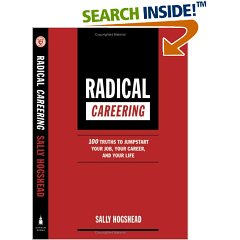Sales are frequently developed through the relationships we have created with other
people. Networking functions provide the opportunity to expand our contact list,
particularly when we create and nurture quality relationships. It is not enough to visit a
networking group, talk to dozens of people and gather as many business cards
possible. However, every networking function has tremendous potential for new
business leads. Here are five strategies to make networking profitable:
1. Choose the right networking group or event. The best results come from attending
the appropriate networking events for your particular industry. This should include trade
shows, conferences, and associations dedicated to your type of business. For example,
if your target market is a Fortune 500 company, it does not make sense to join a group
whose primary membership consists of individual business owners. You can also
participate in groups where your potential clients meet. A friend of mine helps people
negotiate leases with their landlords. He joined the local franchise association because
most franchisors lease their properties.
2. Focus on quality contacts versus quantity. Most people have experienced the person
who, while talking to you, keeps his eyes roving around the room, seeking his next
victim. This individual is more interested in passing out and collecting business cards
than establishing a relationship. My approach is to make between two and five new
contacts at each networking meeting I attend. Focus on the quality of the connection
and people will become much more trusting of you.
3. Make a positive first impression. You have EXACTLY one opportunity to make a
great first impression. Factors that influence this initial impact are your handshake,
facial expressions, eye contact, interest in the other person and your overall
attentiveness. Develop a great handshake, approach people with a natural, genuine
smile and make good eye contact. Notice the colour of the other person’s eyes as you
introduce yourself. Listen carefully to their name. If you don’t hear them or understand
exactly what they say, ask them to repeat it. Many people do not speak clearly or loudly
enough and others are very nervous at networking events. Make a powerful impression
by asking them what they do before talking about yourself or your business. As Stephen
Covey states,
“Seek first to understand and then to be understood.” Comment on their
business, ask them to elaborate, or have them explain something in more detail. As
they continue, make sure you listen intently to what they tell you. Once you have
demonstrated interest in someone else, they will – in most cases – become more
interested in you. When that occurs, follow the step outline in the next point.
4. Be able to clearly state what you do. Develop a ten second introduction as well as a
thirty second presentation. The introduction explains what you do and for whom. For
example; “I work with boutique retailers to help them increase their sales and profits.”
This introduction should encourage the other person to ask for more information. When
they do, you recite your thirty second presentation. “Bob Smith of High Profile Clothing
wanted a program that would help his sales managers increase their sales. After
working with them for six months we achieved a 21.5 percent increase in sales. Plus,
sales of their premium line of ties have doubled in this time frame.” As you can see, this
gives an example of your work and the typical results you have help your clients
achieve. Each of these introductions needs to be well-rehearsed so you can recite them
at any time and under any circumstance. You must be genuine, authentic, and as I
recently heard a speaker say, “bone-dry honest.”
5. Follow up after the event. In my experience, most people drop the ball here. Yet the
follow-up is the most important aspect of networking. There are two specific strategies
to follow:
First, immediately after the event – typically the next day – you should send a
handwritten card to the people you met. Mention something from your conversation and
express your interest to keep in contact. Always include a business card in your
correspondence.
Next, within two weeks, contact that person and arrange to meet for coffee or lunch.
This will give you the opportunity to learn more about their business, the challenges
they face, and how you could potentially help them. This is NOT a sales call – it is a
relationship building meeting.
Networking does product results. The more people know about you and your business,
and the more they trust you, the greater the likelihood they will either work with you or
refer someone else to you.
Copyright 2003 Kelley Robertson, all rights reserved.
Kelley Robertson, President of the Robertson Training Group, works with businesses to help them increase their sales and motivate their employees. He is also the author of “Stop, Ask & Listen – Proven sales techniques to turn browsers into buyers.” Visit his website at www.RobertsonTrainingGroup.com and receive a FREE copy of “100 Ways to Increase Your Sales” by subscribing to his 59-Second Tip, a free weekly e-zine.



